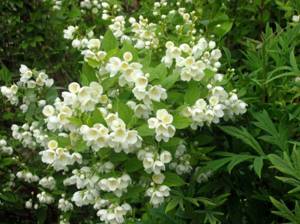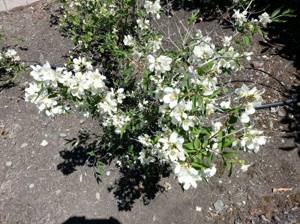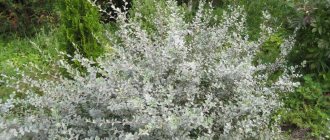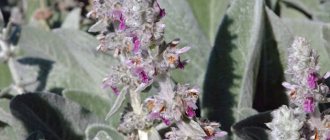Loading…
Loading…
Growing tree-like perennials is always exciting and challenging at the same time, especially if the result is expected to be absolutely stunning. Planting and caring for crown mock orange are described in detail in this article. The plant has been a favorite of amateur gardeners for many years, thanks to its rapid growth, early and long flowering.
Features and characteristics of the plant
Mock orange belongs to the genus Hortensiaceae.
There are about 70 varieties of this plant. Every year, new breeding products adapted for cultivation by private gardeners go on sale. Mock orange crown is a deciduous shrub that grows up to 200 cm in diameter and up to 300 cm in height. A detailed and careful description of this plant was made by specialists of the St. Petersburg Botanical Garden back in the 18th century.
The bush has a spherical shape, made up of long, medium-thick branches covered with thin brown bark. The leaves are ellipsoidal in shape, located oppositely on the shoots, and have a rich grassy green hue.
The flowers are simple, white or cream in color, with bright yellow stamens, collected in small dense racemes. When blooming, they exude a delicate, subtle, bright aroma that creates a cozy and very homely atmosphere in any garden. Flowering lasts 3–4 weeks, starting at the end of May.
Mock orange is characterized by rapid and active growth and is a long-liver (its life cycle can reach 80 years).
Types and varieties of mock orange
Several types of garden jasmine are used in gardening , from which breeders have developed various varieties.
Common mock orange
The shrub up to three meters high is distinguished by bare erect shoots, simple elliptical leaves with a pointed tip and jagged edges, racemose inflorescences and white-cream flowers with a pleasant aroma. The most popular varieties of this species
- “Bicolor” is a fluffy shrub up to two meters high, on the side shoots of which single flowers are formed. This variety is used mainly for landscaping.
- "Belle Etoile" - a plant up to one meter high, is distinguished by small leaves and bell-shaped simple flowers with a strawberry aroma.
- “Virginal” - a shrub up to three meters high has a wide crown, dark green pointed leaves and white double flowers that bloom on racemose inflorescences in July.
Mock orange crown
Growing in southern Europe, Asia Minor and the Caucasus, the plant will grow up to three meters in height. Its red-brown or yellowish young shoots are densely strewn with oval leaves. For about three weeks, cream-colored flowers bloom on the bush, which are collected in racemose inflorescences. Popular varieties:
- "Innosense" - a medium-sized plant distinguished by leaves with cream spots and white single flowers with a strong aroma.
- "Variegatus" - a shrub growing up to three meters in height is strewn with leaves, along the edges of which there is an uneven, wide, creamy stripe.
- "Aureus" is a fast-growing plant with a spherical crown and yellow-green leaves. Its numerous flowers emit a very strong aroma that can be felt from afar. The variety is valued for its aroma and the unusual color of the foliage, against which the flowers are almost invisible.
Requirements for growing conditions

Chubushnik coronata is relatively easy to plant and care for, unpretentious, and quickly adapts to new growing conditions, especially in the middle zone and central Russia. It is characterized by excellent frost resistance and winter hardiness, easily tolerates frosts down to -23 - 25°C. At lower environmental temperatures, shoots that are not covered by snow may freeze, but in the spring, young healthy branches quickly and amicably appear in their place.
The crop tolerates gas pollution well, so it is widely used in landscaping parks and alleys.
Choosing a place and time of landing
Mock orange crown prefers well-drained, loose, neutral, light soils, with good aeration and throughput.
When choosing a place for planting, give preference to bright sunny areas, without close groundwater. Young seedlings need protection from sharp gusts of wind - this also needs to be taken into account before planting.
If the soil on your site is characterized by low fertility and heavy structure, it is recommended to completely remove the soil from the planting hole and replace it with a universal soil composition, which can be purchased at any specialized store.
Planting is best done in the spring, in May, when the threat of return frosts has passed, the soil and air have warmed up enough so that the seedling does not experience severe stress.
Planting shrubs
Planting mock orange is best done in open, bright areas where there is a sufficient amount of sunny color. In such places, flowering will be more luxuriant. And in shady areas, the flowers become smaller and the shoots become too elongated. Soil with good water permeability is best suited for this shrub. In this case, its composition may be as follows:
- one part of humus;
- two parts sand;
- three parts of leaf soil.

If the soil on the site has poor water permeability, then a drainage layer is added to the planting hole. Planting is best done in the fall, from mid-September to October. You can plant a bush in the spring, but it is more difficult to do this due to the fact that the buds begin to bloom, and it is necessary to have time to replant before they begin to bloom.
When planting several plants, it is necessary to maintain a distance between them. You should retreat from each other approximately 50-150 centimeters. You should proceed from what variety of plant is chosen and how an adult bush should grow. When planting a hedge, 50-70 centimeters retreat between the bushes.
First you need to dig a hole, the size of which is approximately 60x60x60. Afterwards it is necessary to fill the bottom with a layer of drainage. They can use broken brick, then make a layer of sand, the thickness of which is about fifteen centimeters. After this, the prepared substrate is poured. It is recommended to carry out a similar procedure about a week before planting the plant itself, so that the soil subsides a little.
After the soil has settled a little, you can plant the bushes. The roots of the seedling must be deepened into the ground so that the root collar is flush with the surface of the site. The hole must be filled with fertile soil. After planting, it is necessary to water the bushes. To do this, pour 2-3 buckets of water under each of them. After watering, the soil will subside a little more, and then you should pour a little more dry soil into the formed holes. After a couple of days, it is advisable to mulch the soil around the mock orange using sawdust or peat.
Japanese euonymus: care at home
Caring for mock orange
Caring for garden jasmine is not labor-intensive, but you should know certain rules. For example, the plant does not tolerate dry periods well, so it should be watered regularly. You can tell if a bush is lacking moisture by looking at its foliage - it loses its elasticity and becomes lethargic. Experts recommend watering every week. Each bush uses 2-3 buckets of water. When the flowering period begins, mock orange should be watered more often, and sometimes this has to be done daily.
After watering, it is recommended to loosen the soil around the bush and remove all weeds. However, if mulching has been carried out, this will need to be done much less frequently.
At the beginning of spring, fertilizer is applied under the bush. The plant responds best to slurry. To do this, it is diluted with water in a ratio of 1:10. One bucket of solution is required for one adult bush. After the end of the flowering period, fertilize with wood ash. It is scattered around the tree trunk before watering the plant. The four-year-old shrub is fed with complex mineral supplements.
Garden jasmine is pruned in order to obtain more luxuriant annual flowering. The fact is that only strong shoots from last year bloom, and on older and weaker branches flowers either do not appear at all or appear in smaller quantities. Because of this, the bush looks untidy. Therefore, after the end of the flowering period, it is necessary to prune the branches on which the flowers have faded to strong shoots located at a lower level.
Pruning mock orange in the fall also includes sanitary pruning. Dried, broken and diseased branches should be removed. In the spring, you can do anti-aging pruning, in which several trunks are shortened to thirty centimeters, and the rest should be removed to ground level. In this case, you need to make sure that sap flow has not yet begun. It is recommended to treat the cut areas with garden varnish.
The shrub takes well to replanting. But despite this, during this procedure you will have to sacrifice its fluffy crown, that is, one year of flowering is lost. Many people believe that replanting mock orange in the fall is preferable. During this period, you don’t have to rush anywhere, and the work will be done with better quality.
Reproduction methods
Mock orange is propagated in four ways. These include:
- propagation by dividing the bush;
- using layering;
- cuttings;
- seed propagation.

No particular difficulties arise with either method. If the seed method is used, then a plant capable of flowering will grow in about three years from the moment of planting.
When cuttings you can use several methods:
- use annual cuttings that are cut in early spring, before the growing season begins;
- use cuttings that are cut in the fall;
- use green cuttings.
Fragrant savory: cultivation, benefits and harm of the plant
If autumn cuttings are used, they are stored all winter before planting in a cool basement, where the temperature will be approximately 0. Planting is carried out in early spring. By autumn, the cuttings should have formed a good root.
You can also propagate the plant by layering. To do this, you should select in advance the most beautiful bushes, which must be healthy. In spring they are cut back to the ground. After some time, a period of active growth will begin, and young and flexible shoots will begin to grow.
Another year, after the first leaves begin to appear, the flexible stem is tied with a wire harness. It should be located about a centimeter before the lower bud. After some time, this place will begin to thicken and the formation of a root system will begin. After the first signs of rooting appear, the stem is tilted and covered with nutritious soil. At the same time, you must not forget about regular watering. In the fall, you can separate a young bush and transplant it to a permanent place.
It is good to propagate young bushes by dividing the bush itself. It will be quite difficult to dig up and divide a large bush, but small bushes are very well suited for this. First of all, it will be necessary to dig up the mock orange and free its roots from the ground so that it becomes clear where to divide the plant. The main thing is not to harm him. It is preferable to divide the bush in the fall, preferably in October. You can do this in the summer, but it’s better to wait until the end of the flowering period.
Possible pests
The most dangerous insect pests for mock orange are aphids or weevils. A tick can also pose a certain danger.
Many gardeners fight aphids using a soap solution. They spray the bushes with it. You can also use mildly toxic pesticides.
Preparations containing phosphorus, which are intended for treating garden jasmine, help get rid of mites. Spraying with Chlorophos can help destroy the weevil.
Thus, growing mock orange, planting it and caring for it in open ground does not take much effort and time, and the result will please many. Lush flowering and unique aroma will make garden jasmine one of your favorite garden plants.
Planting mock orange
Before you start planting, you need to prepare a planting hole with a diameter of 60–100 cm (depending on the volume of the root system and the age of the plant), and a depth of 60–70 cm.
Excavated soil:
- It should be mixed with peat (if it is heavy, loamy) or sand.
- Add rotted manure and granular phosphorus-potassium fertilizers (approximately 1 - 2 tablespoons).
- If the quality of the soil leaves much to be desired, then it can be completely replaced with a store-bought ready-made soil composition for universal use. In this case, adding organic fertilizers does not make sense.
Drainage should be placed at the bottom of the hole, which will prevent stagnation of water and rotting of roots, and improve metabolic processes. Expanded clay is most often used as drainage, but in the absence of this, fragments of pottery and bricks can be placed at the bottom.
Next, a peg is installed in the center of the planting hole, next to which the seedling is placed. The root system is carefully and carefully straightened, after which the hole is gradually filled with the previously prepared soil mixture. At the end, the seedlings are well shed with water at room temperature.
When planting, make sure that the root collar is not too deep. This can cause slow growth or even rot.
Planting and propagation
Vegetative propagation of this bush is preferable; generative propagation may disappoint, since sprouts obtained from seeds may not correspond to the characteristics of the selected adult mock orange.
Seeds
Before sowing, the seeds are “frozen” - kept for several weeks at a temperature of +20C. In January it is necessary to prepare a special mixture for such storage. Mix moistened sand and peat in equal proportions along with the seeds and place in the refrigerator in a separate container. A vegetable box is suitable for these purposes; the ideal temperature regime is maintained there.
With the onset of the first warm days (beginning of March), they are sown in a box; the soil substrate should consist of soil, humus, peat, proportions 1: 1: 2, respectively, plus sand. After sowing, keep the soil moist, and after 2 weeks seedlings appear. They should grow to 3-4 leaves, then they are docked in a place protected from the sun.
Cuttings
When selecting this material, you need to choose well-developed annual shoots with a growth heel. They are cut and planted; for quick rooting, it is advisable to treat the cuts with a ready-made root-forming mixture.
In the container, the soil should consist of sand, earth and peat, the cutting depth should be no more than 0.5 cm. For rooting, it is necessary to maintain an optimal moisture level - spray from a spray bottle twice a day. Cover the container with glass.
After the root system appears, planting is done in open ground.
Layerings

This method is simple and does not require special skills.
Actions can be contained in several steps; they are done in the spring:
- The soil around the bush is loosened and leveled, and fertilizer can be applied.
- A 2 cm deepening is made in the shape of a groove.
- A young healthy shoot is bent down, secured with soft wire in the ground and sprinkled.
- In the spring the next year, the cuttings are separated from the mother bush, dug up and planted separately.
Root division
Dividing the bush should be done in spring or early autumn. During the flowering period, mock orange should not be touched. To divide, the plant is dug up, divided into several parts and planted. It should have time to take root before the cold weather sets in.
Caring for mock orange
Mock orange crown is an unpretentious crop, therefore it does not require special care measures.
Among the main activities are the following:
- Watering is carried out in the first two summer months, once every 1.5 - 2 weeks, adjusted for weather conditions.
- Feeding is carried out once a year, after the snow melts. To do this, depending on the type of soil, they use either a liquid solution of organic fertilizers or mineral mixtures (azophoska or superphosphate), embedded in the tree trunk.
- Pruning is carried out in the fall as a sanitary pruning, during which damaged and diseased shoots are removed. It can be repeated after wintering, if necessary. Formative pruning is carried out after flowering. In this case, the branches are cut down to part of the growth.
- Preparation for wintering - mock orange is a frost-resistant plant, so it does not require shelter even in the first year after planting in the garden. The only activity that needs to be done before the winter season is to remove the dead parts of the plant and mulch the tree trunk with sawdust.
Reproduction of mock orange
To propagate mock orange, you can use:
- layering;
- cuttings;
- parts of the bush.
Experienced gardeners who love to overcome obstacles propagate this crop by seeds.
The grateful plant easily takes root when using any option. You need to choose the one that will be convenient for you.
Planting and caring for mock orange is a rewarding and uncomplicated task. The main thing is to remember the correct algorithm of action, to love the plant and not spare time and effort on it. In this case, your garden will become the envy of all your neighbors!











